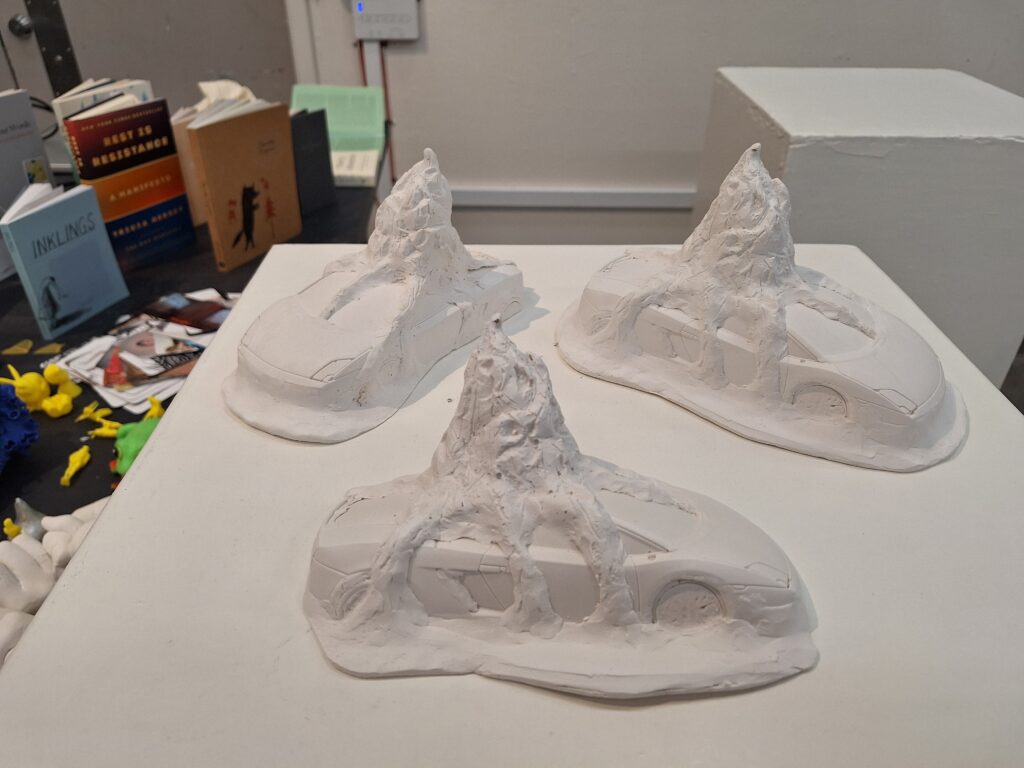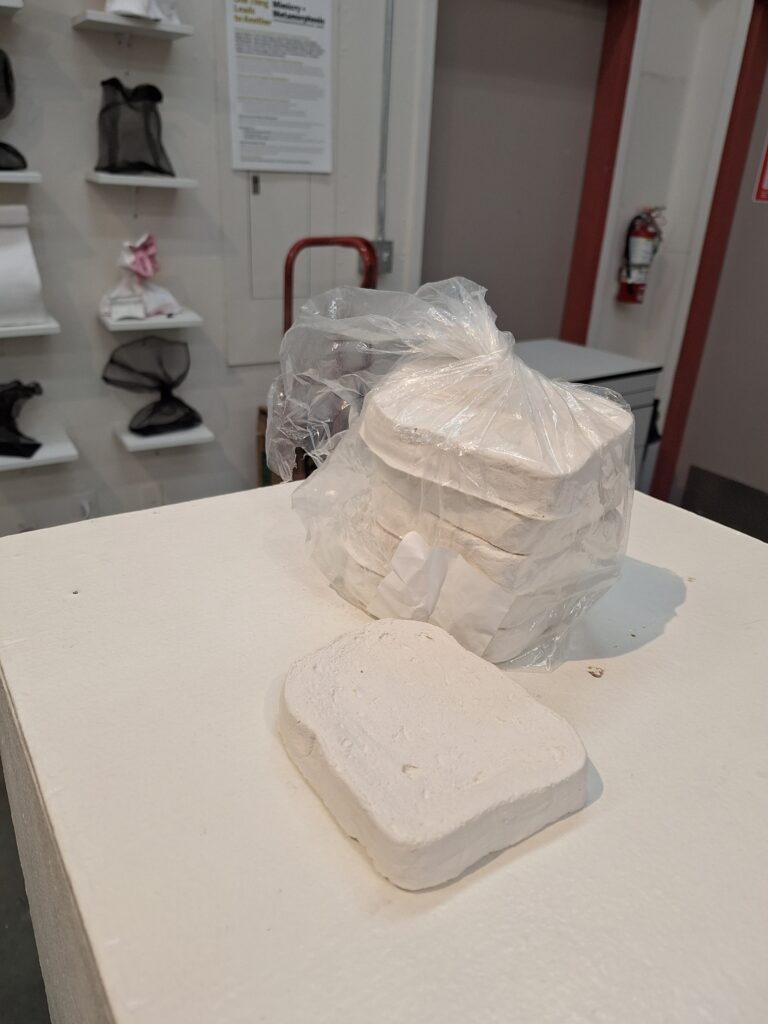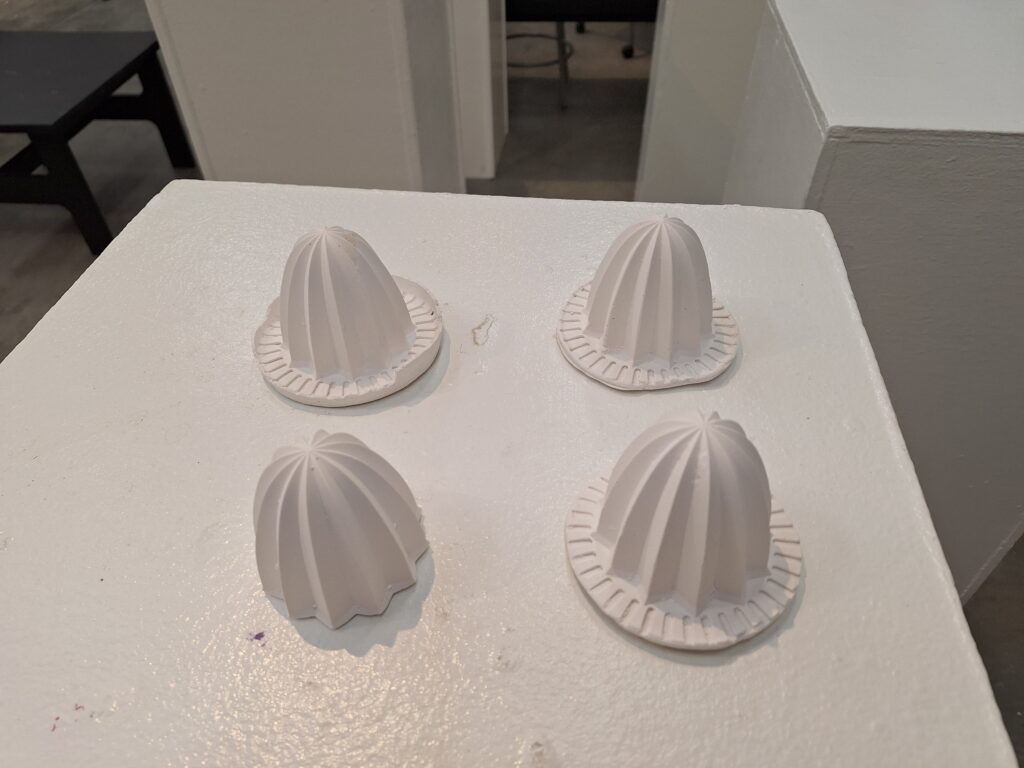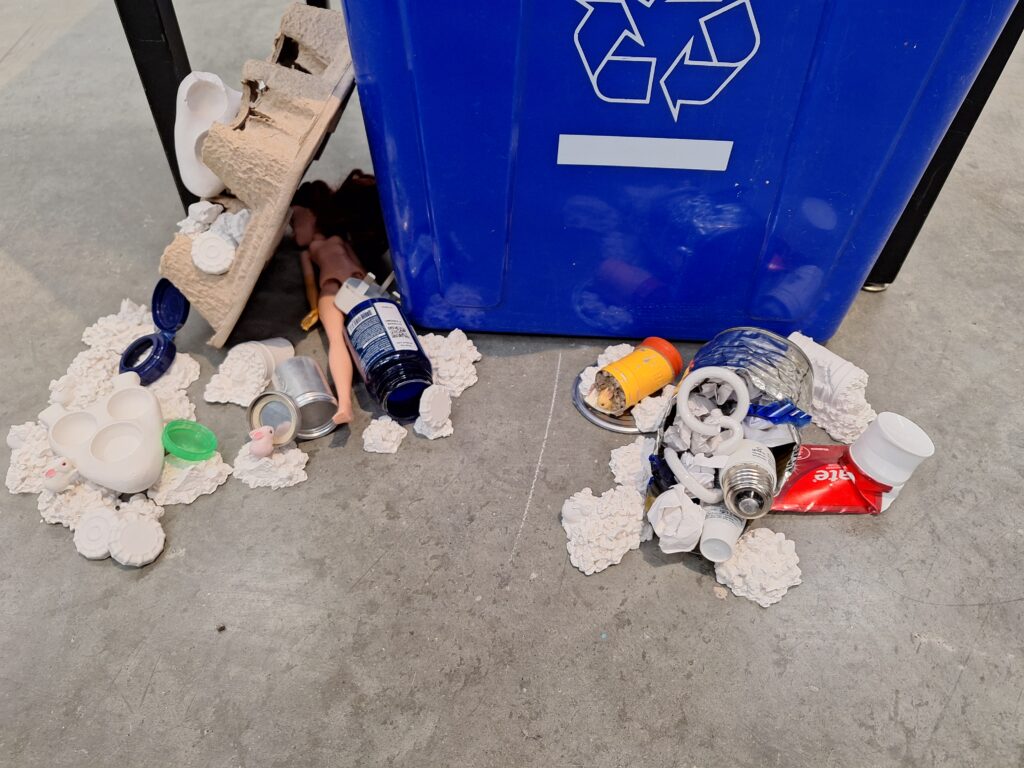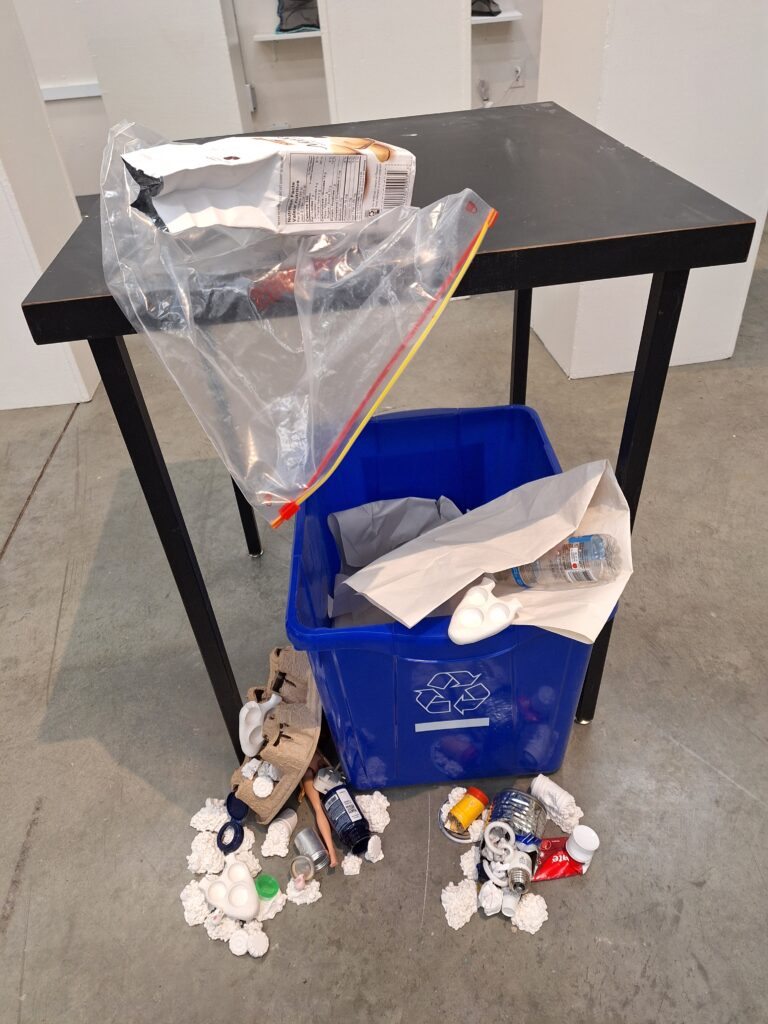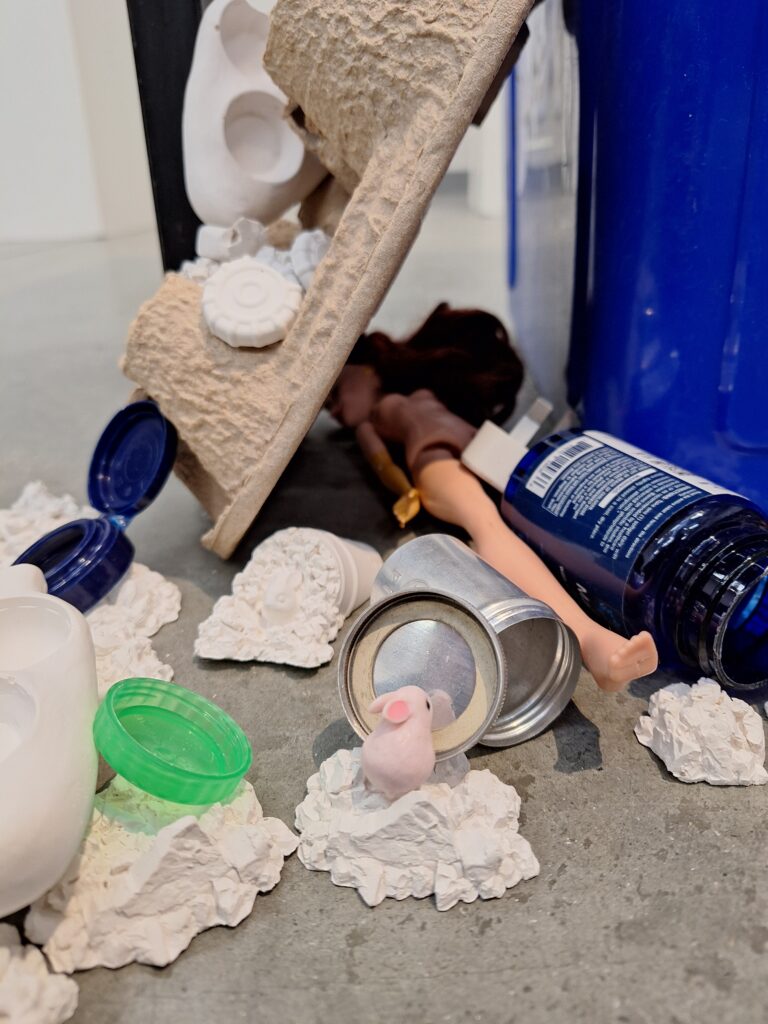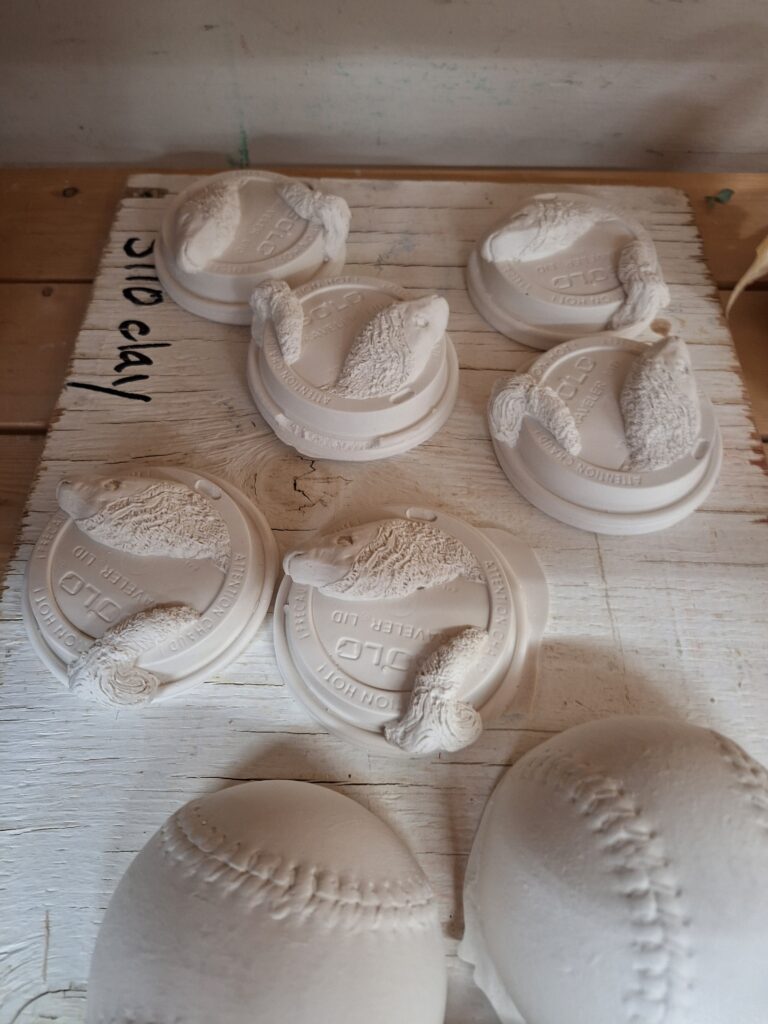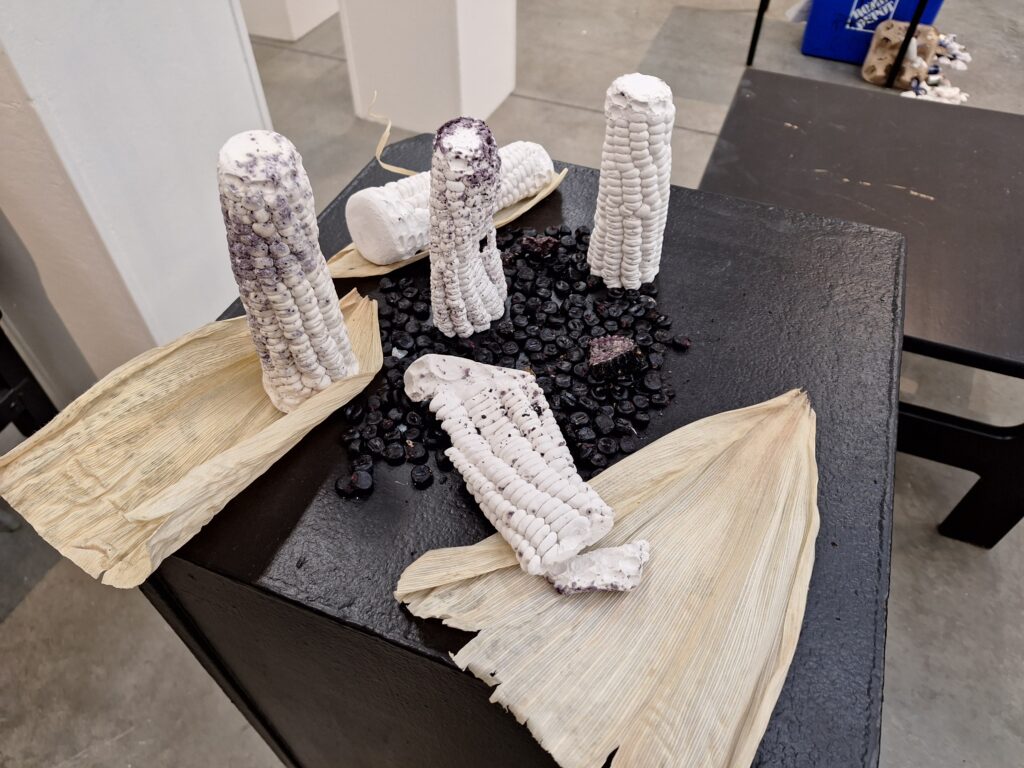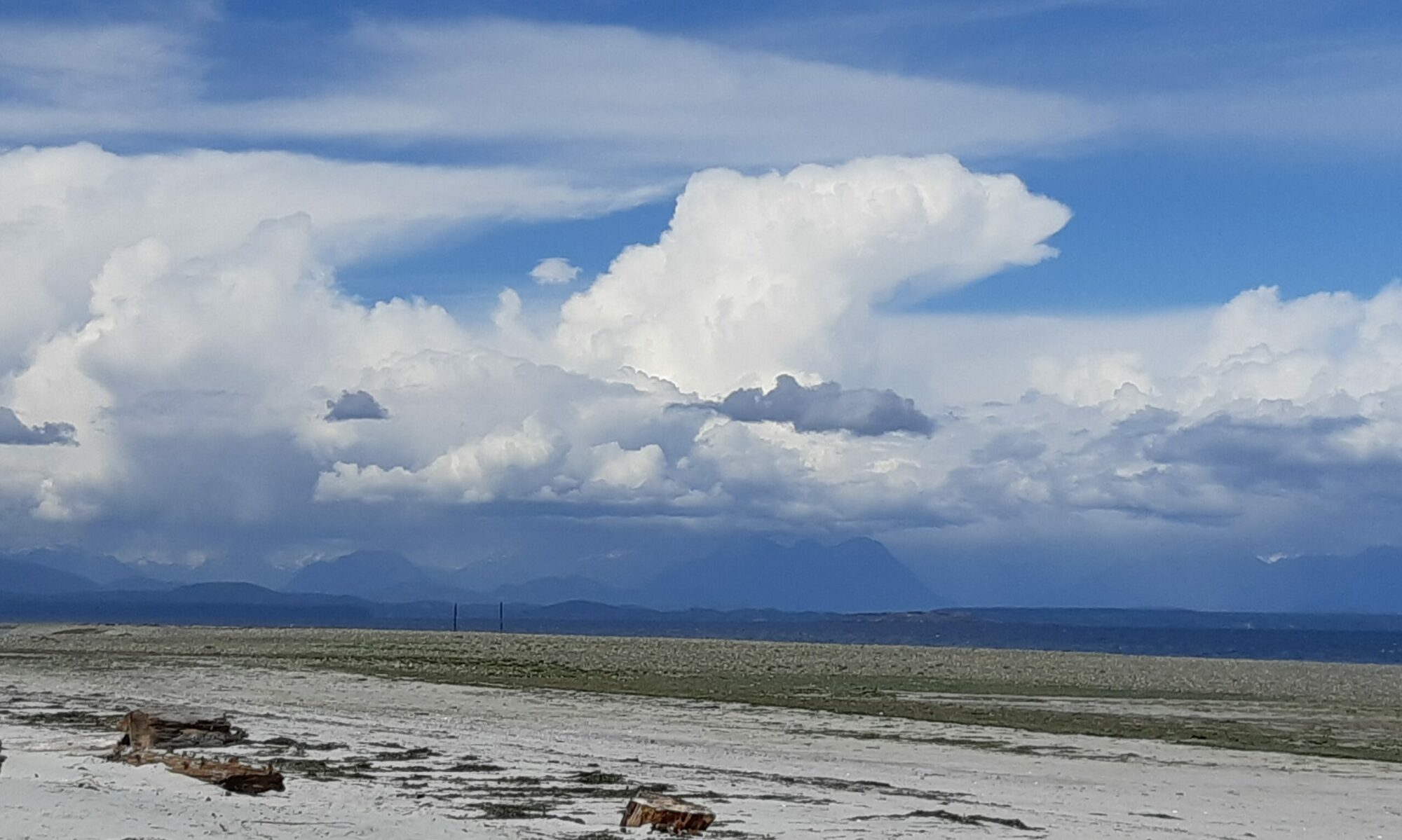Studio Project 1 – Common + Curious: Sum of Their Parts | Hybrid Object Design + Multiples
(rubber molds, hydrocal, HGR, hydrostone)
My starting off point was to watch the Ted Talk by Katerina Kamprani: Do we really have to design comfortable objects?
I also drew some inspiration from seeing and handling projects from past students.
My ideation was recorded in a notebook. I chose not to explore via AI for my own personal ethical reasons (see article below)
Here are some of my playful ideas:
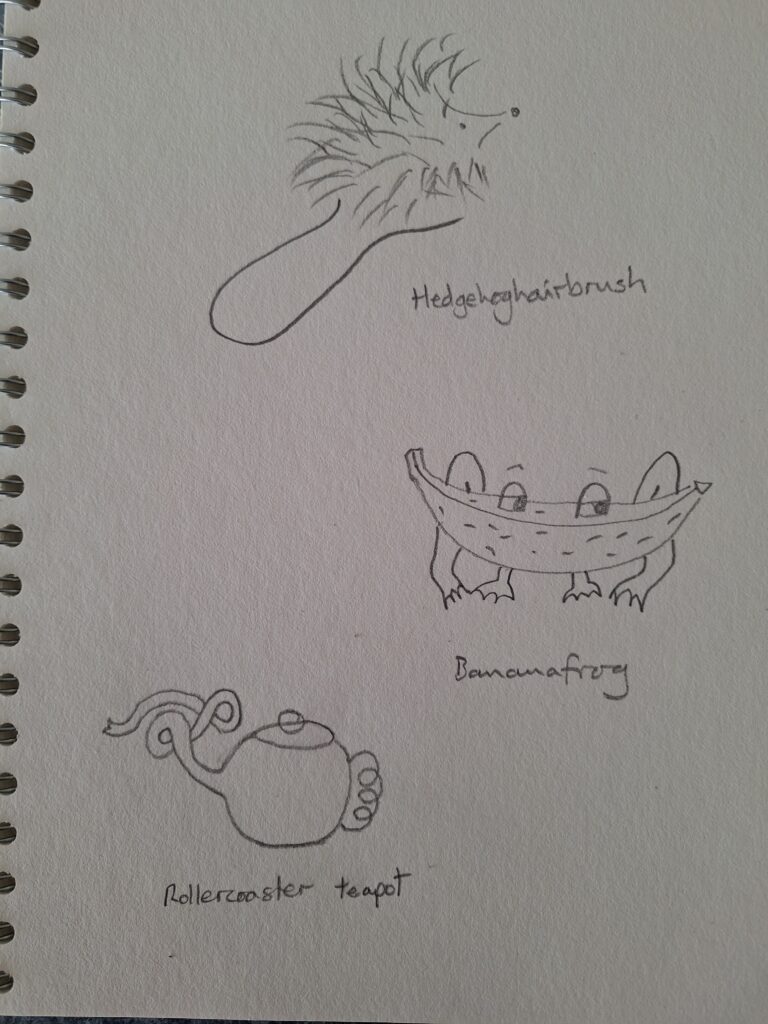

I thought about how I could combine two objects to make a statement in a subtle or humorous way. I thought of a car with an iceberg melting on it and a boat with a whale in it- commenting on climate change and also air and noise pollution. If this was a bigger project, I might have done both and played with mixing and matching but I decided to go with my car idea. It was suggested that I might consider what make and model of car to use.
Climate change is something that concerns me greatly, especially as it relates to the consumption of fossil and fuels and the suppression of information by oil companies.
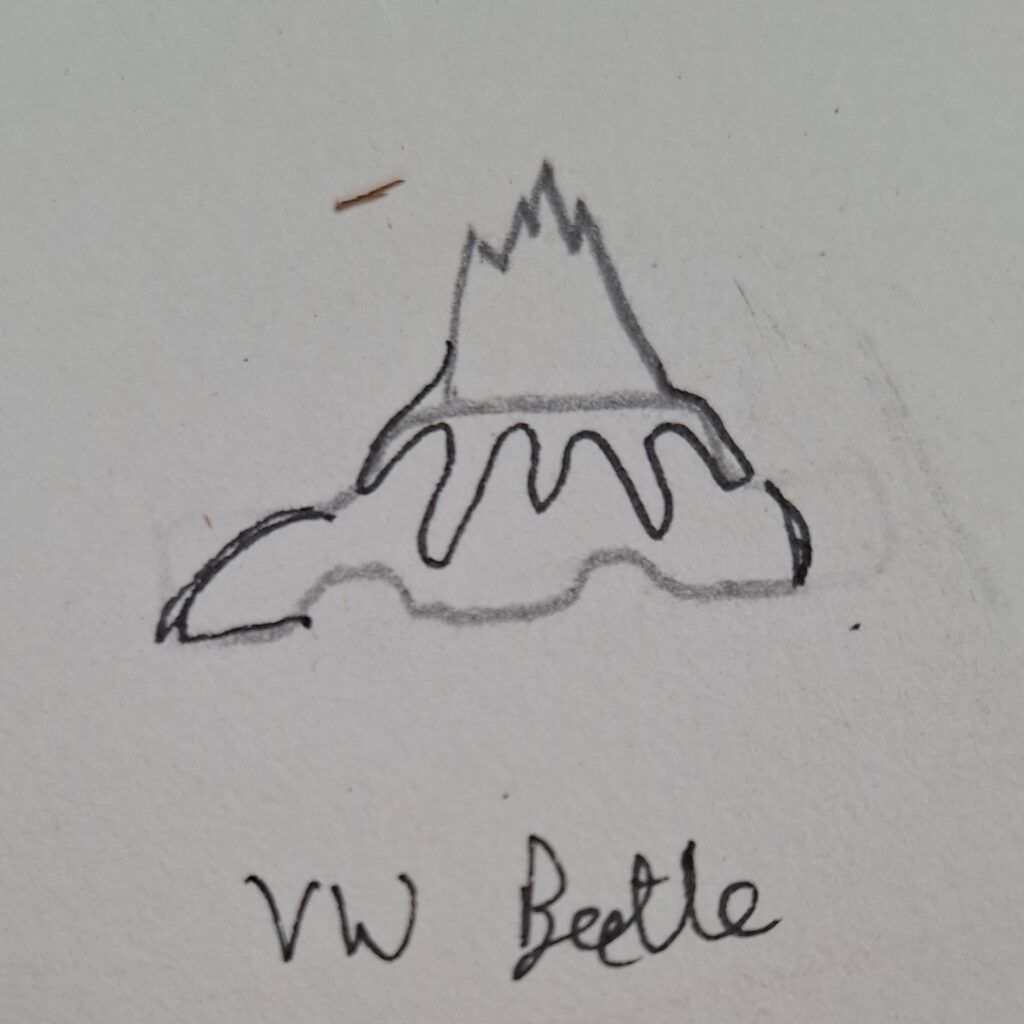
I thought about a VW Beetle and ended up with a Lamborghini. I sourced my toy car at the thrift so as not to introduce new plastics into the consumer cycle.
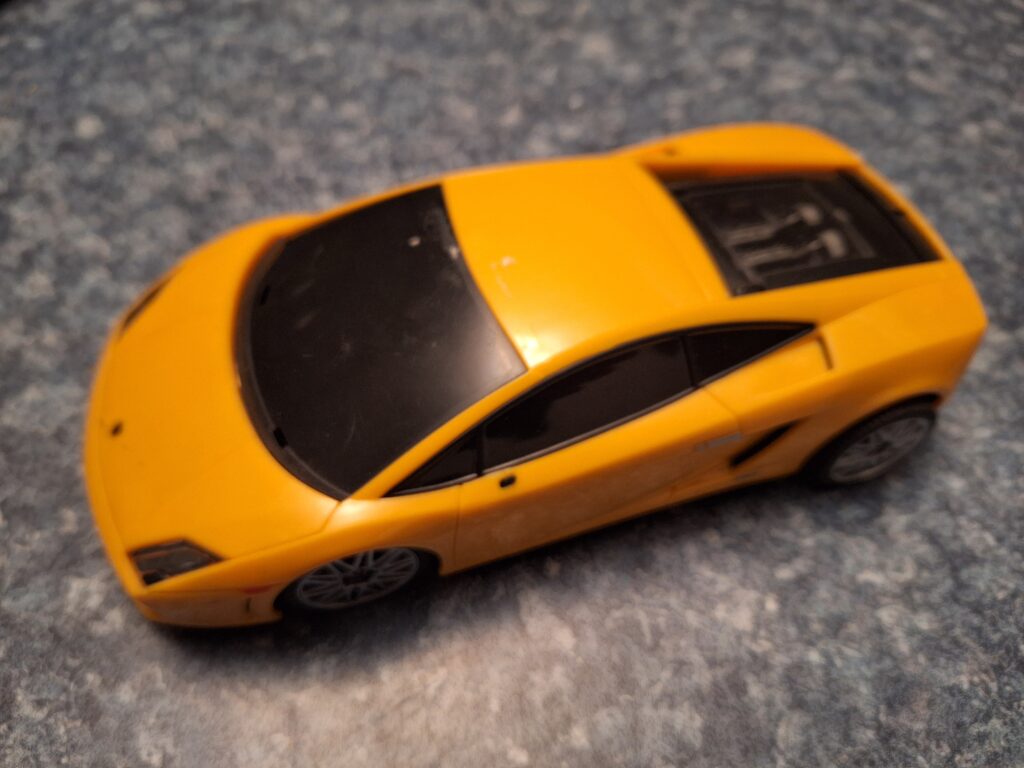
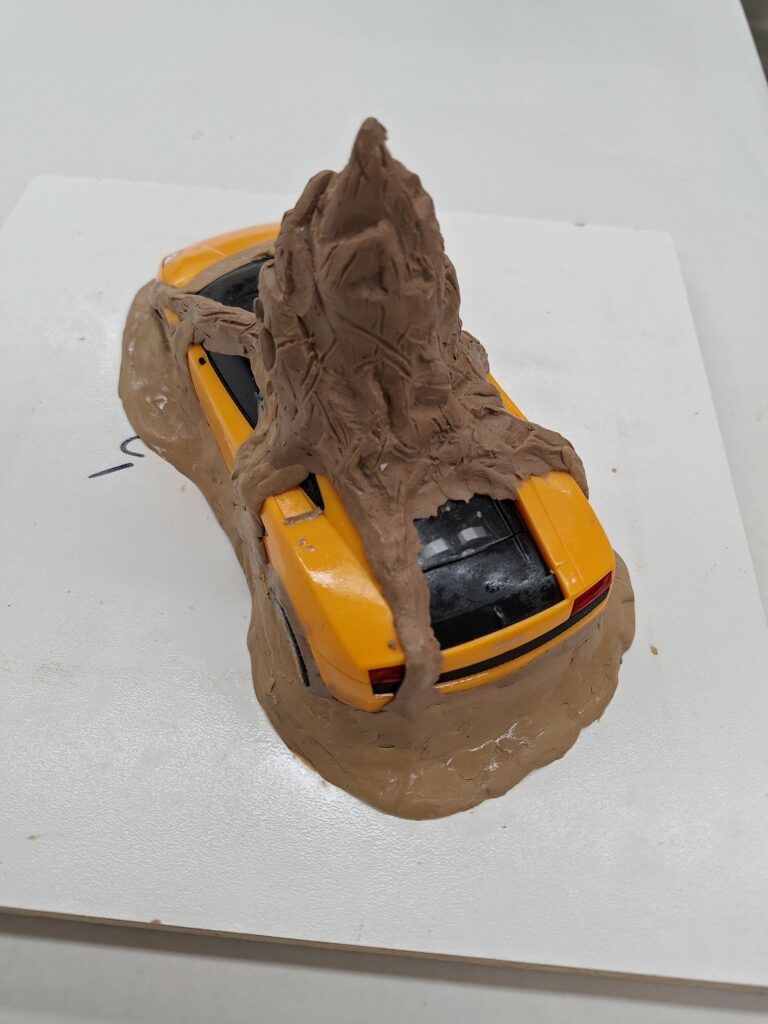
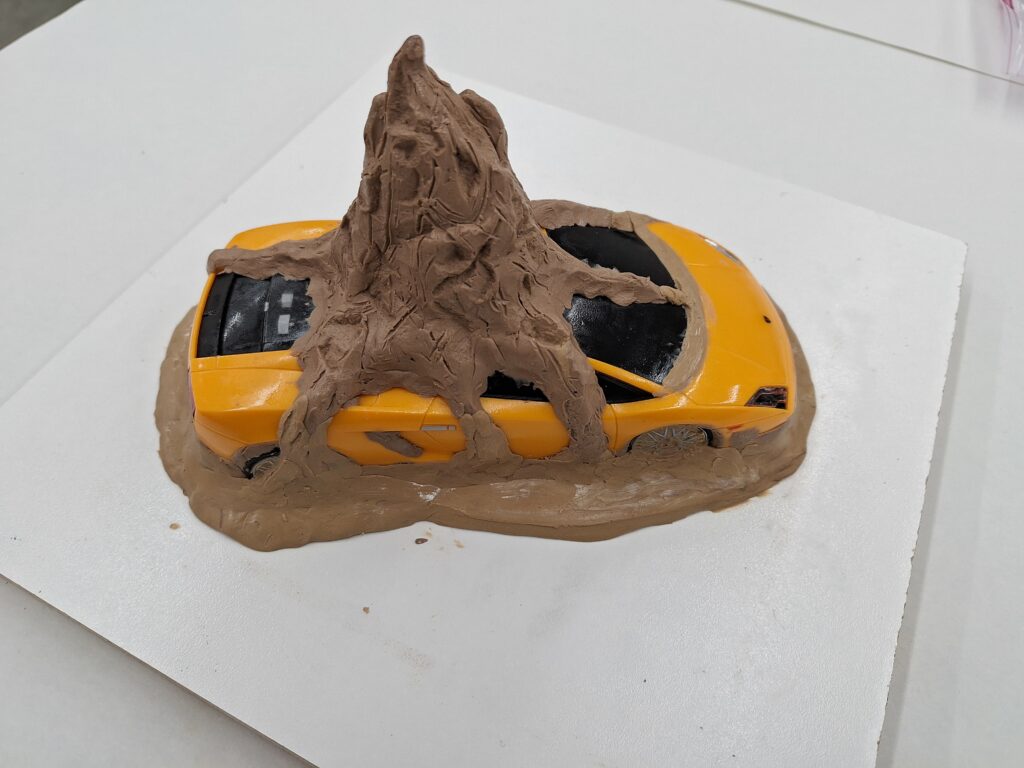
Lamborghini plus iceberg.
The car was sprayed with 2 layers of release spray before modelling the iceberg. I used sculpting tools and rocks to create the texture. The car was glued to the board and a ‘puddle’ of modelling clay was built up around the outside. I had to fill in numerous indentations, including the spokes of the wheels that were largely filled- leaving just a suggestion of the shapes.
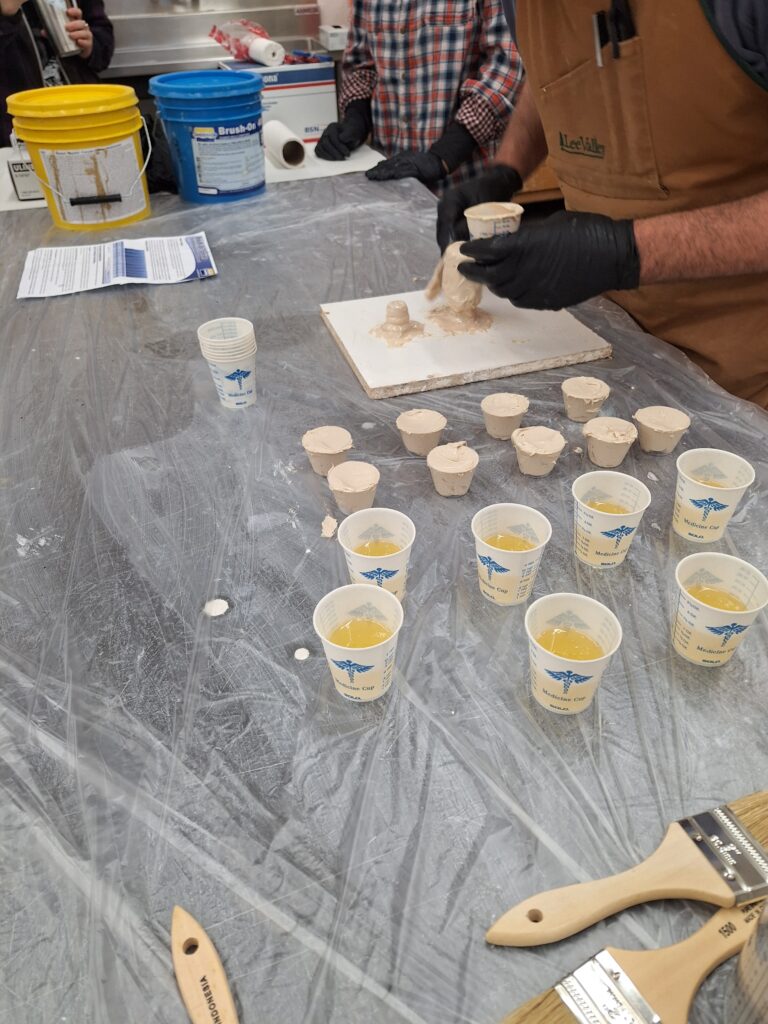
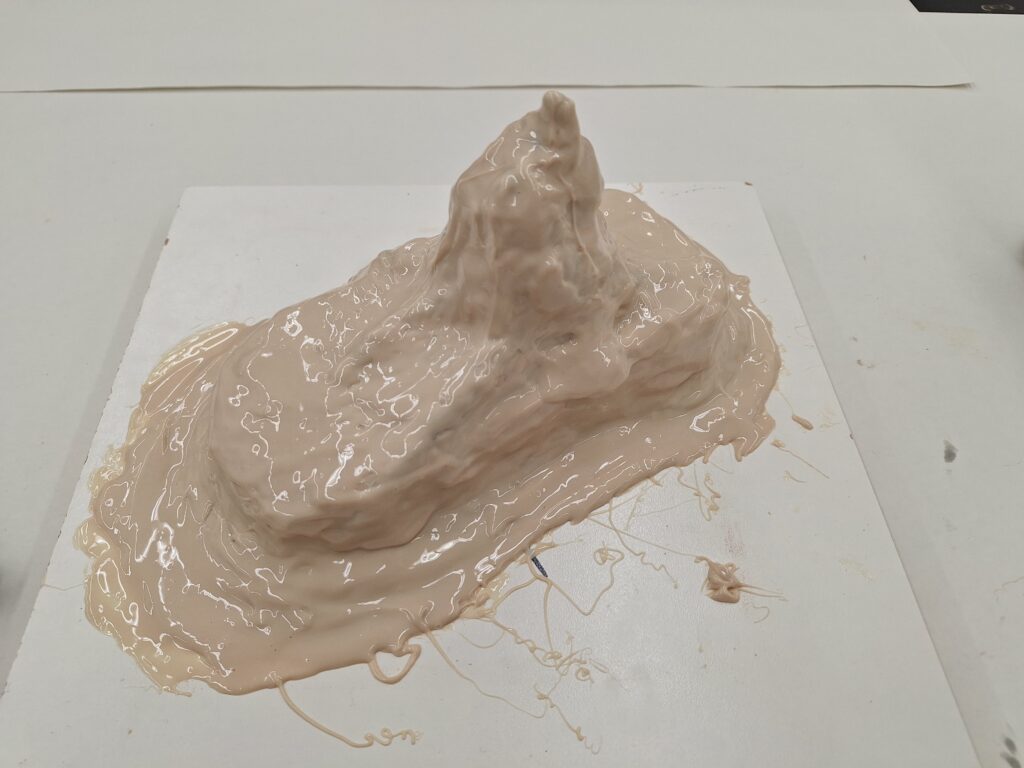
The two parts of the rubberized material were measured out for us- thanks Jeff- before being combined for 3 minutes. After this time the first coat was applied with a brush and care was taken to work the material into all of the nooks and crannies. Four layers were applied in total with a wait time of 20 to 30 minutes between (until the surface was tacky but not coming away on my glove. The material was applied beyond the edges of the model in order to create a flange to allow for ease of pouring plaster later on. The mould was left to cure for a couple of days at room temperature.
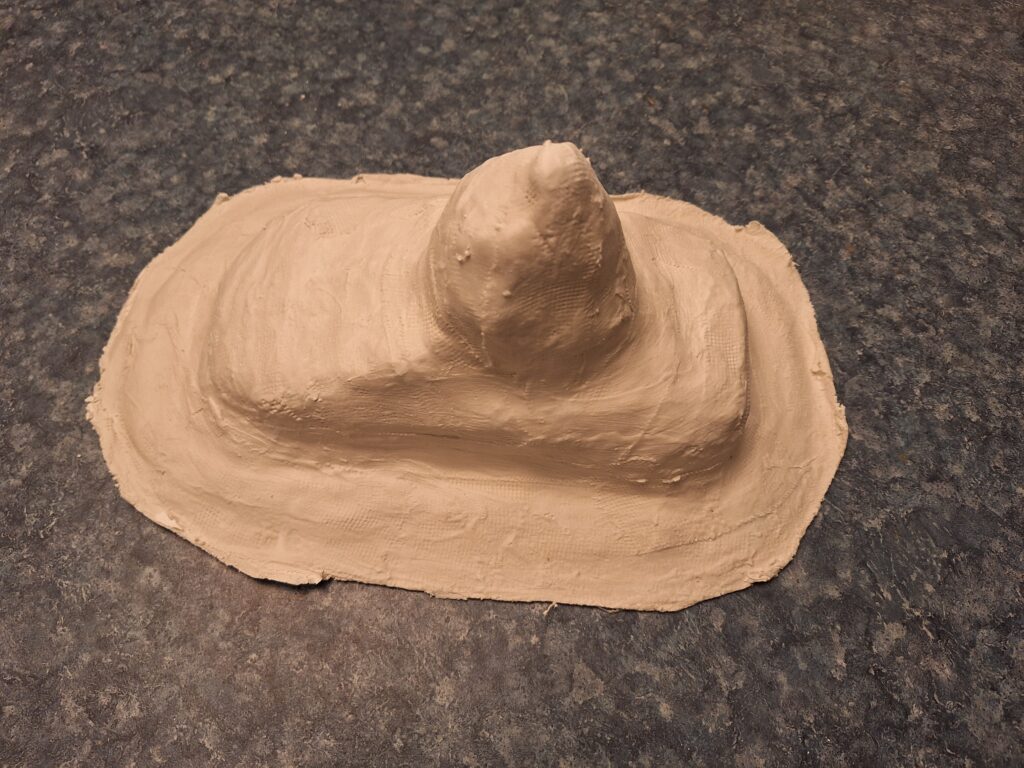
Since my model has a very wide opening, I created a mother mould by applying plaster bandage to the rubberized mould. I was advised to pay attention to areas that need to be especially strong- such as the convex curve at the base of the car and the edges of the flange. This layer was left to dry overnight.
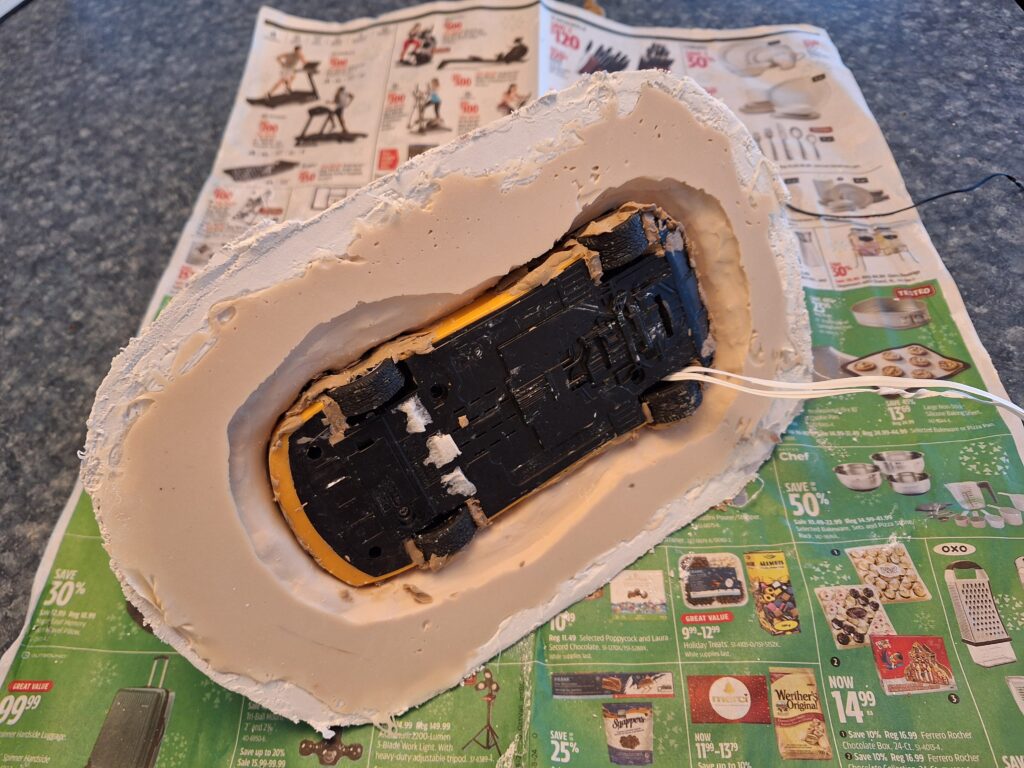
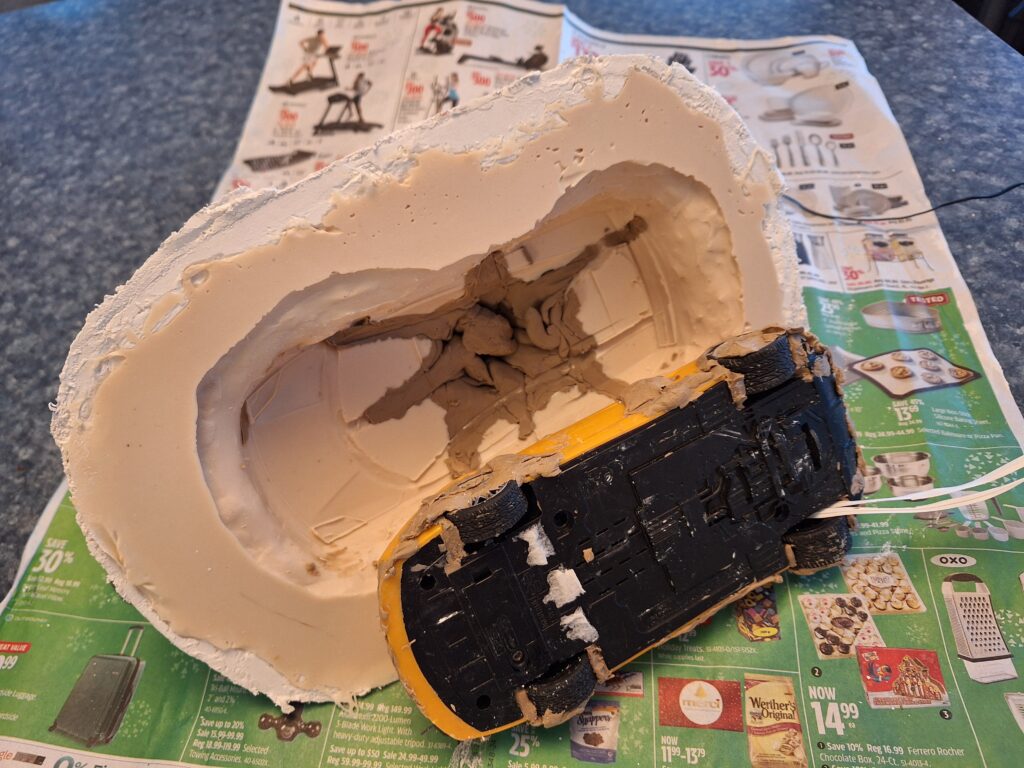
Separating the layers proved to be challenging, despite having been sprayed with a releasing agent. I struck on the solution of looping a long twist tie under the axle of the car and eased it out. My plan worked- yay!
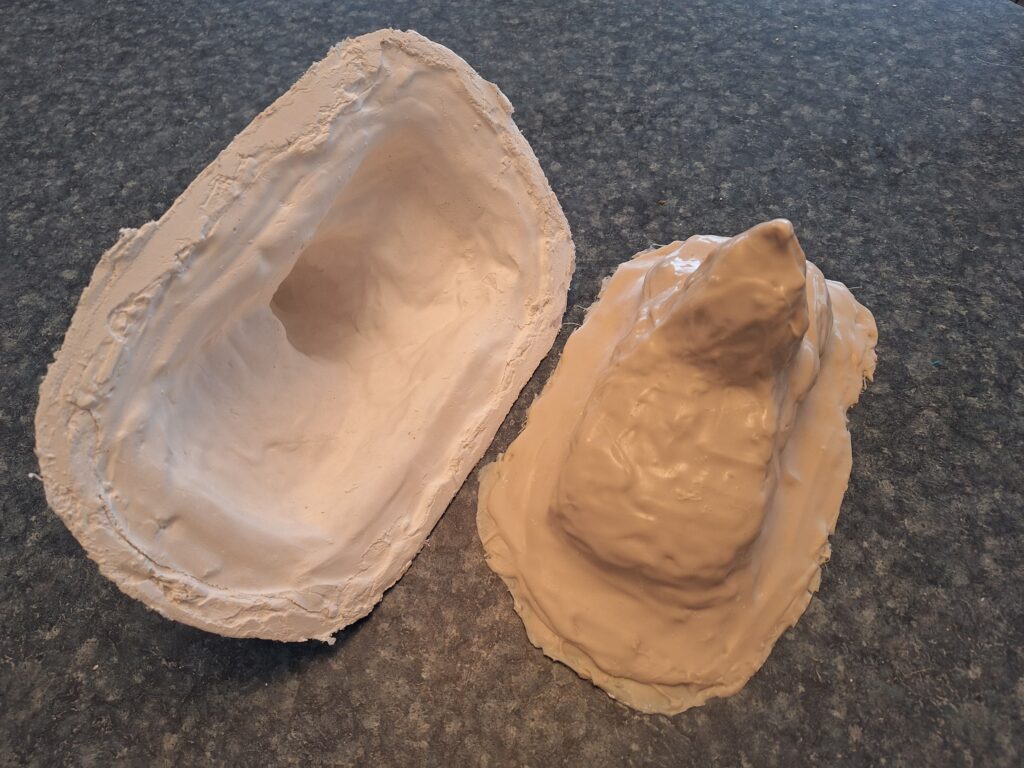
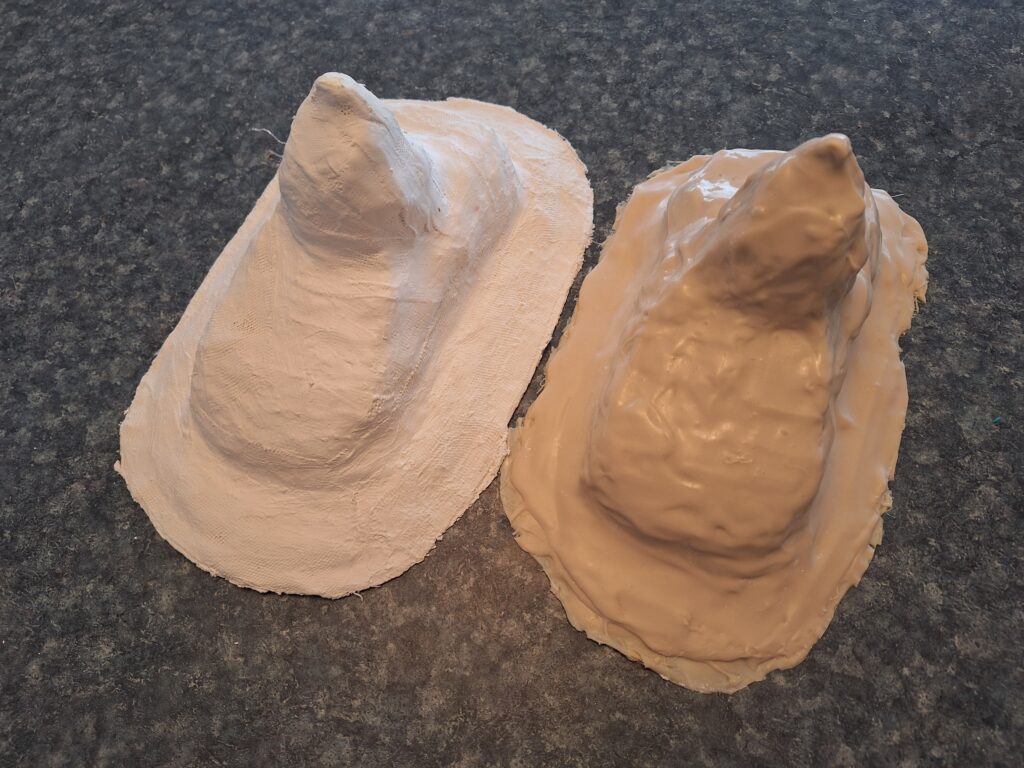
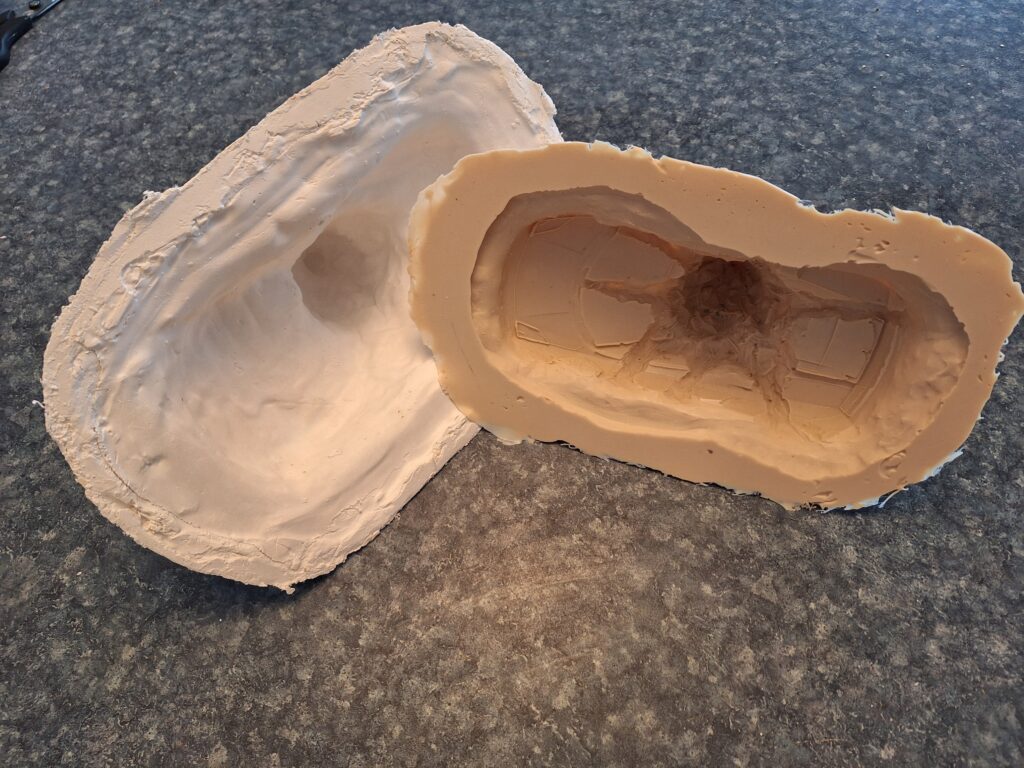
Rubber mould and mother mould are now ready for action 🙂
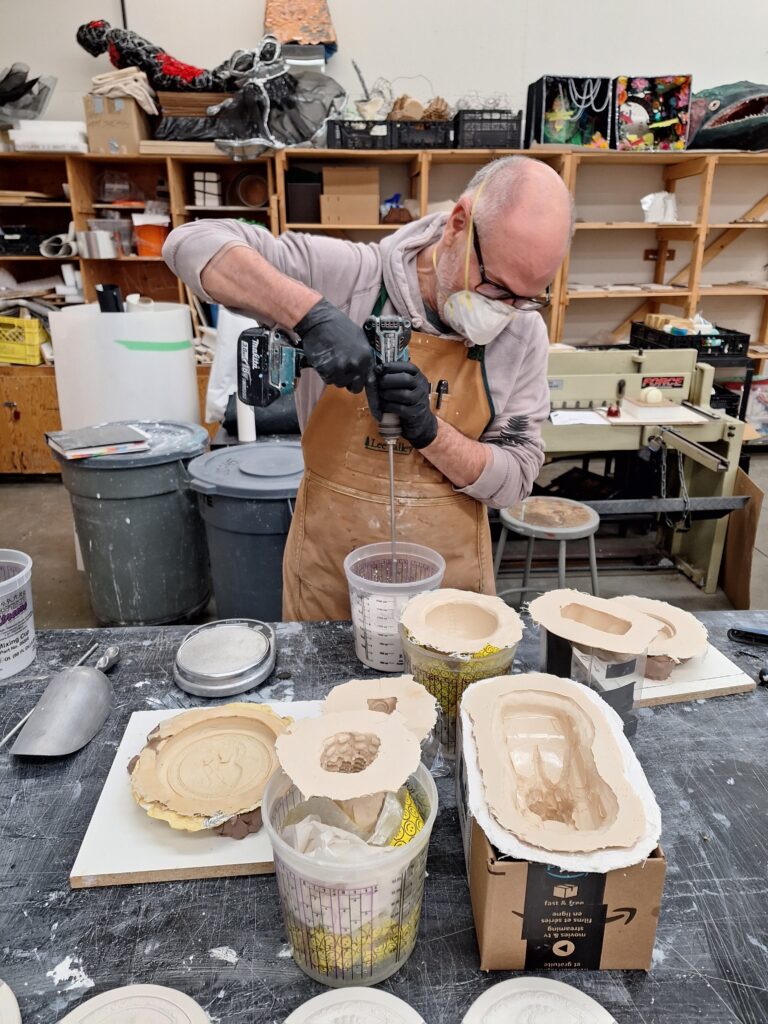
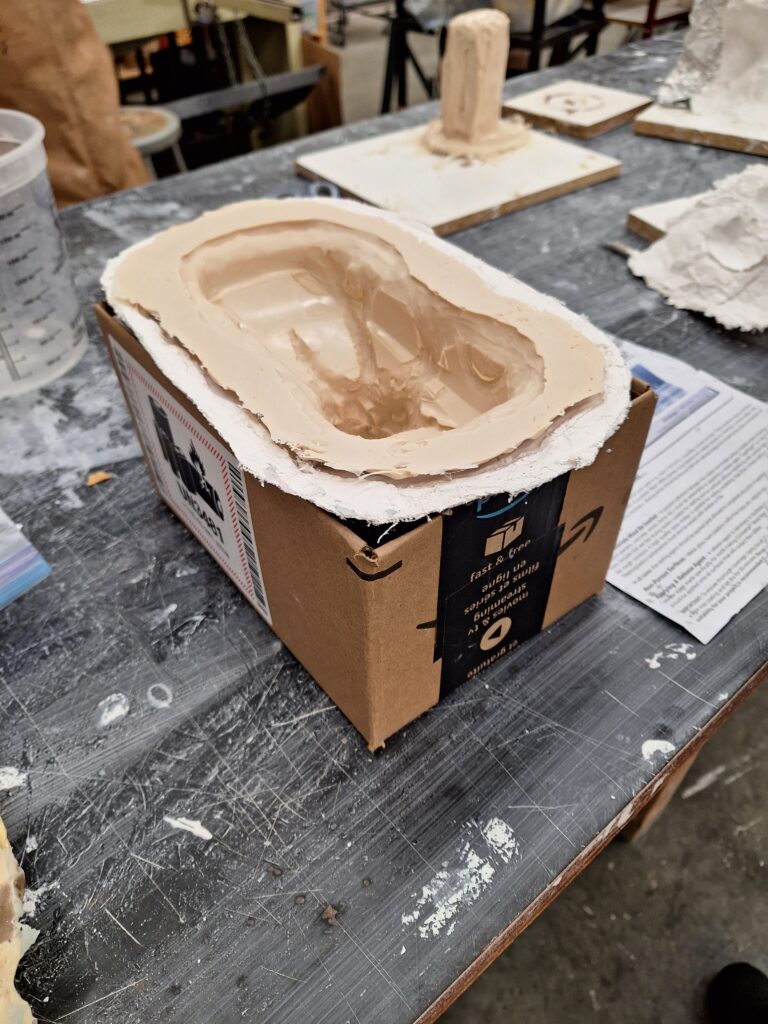
My mould was supported by bubble wrap within a box- plus the mother mould. Jeff is mixing the hydrocal, making sure the powder is fully combined with the water- 1000g hydrocal to 450g water. As soon as the mixing is done, the mixing tool needs to be washed. The hydrocal is ready to pour right away and time is of the essence as it thickens/hardens quickly. We had several moulds ready and poured until the mix was gone. My first pour was partial so I tipped the mould to give the effect of the car sinking slightly at one end.
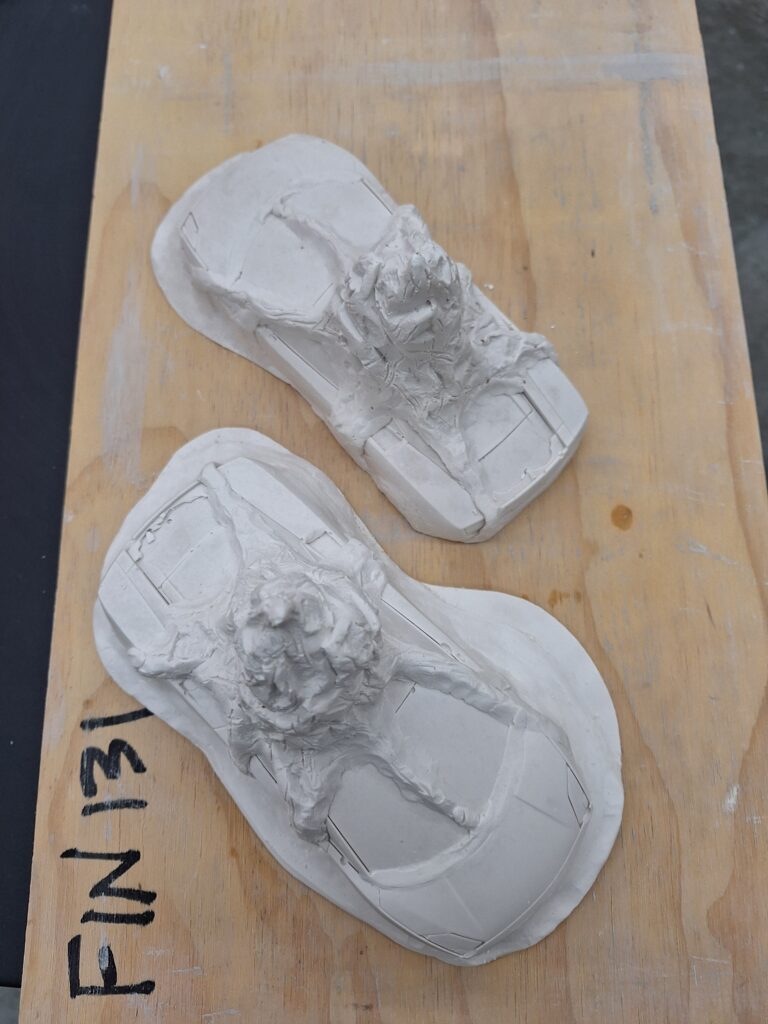
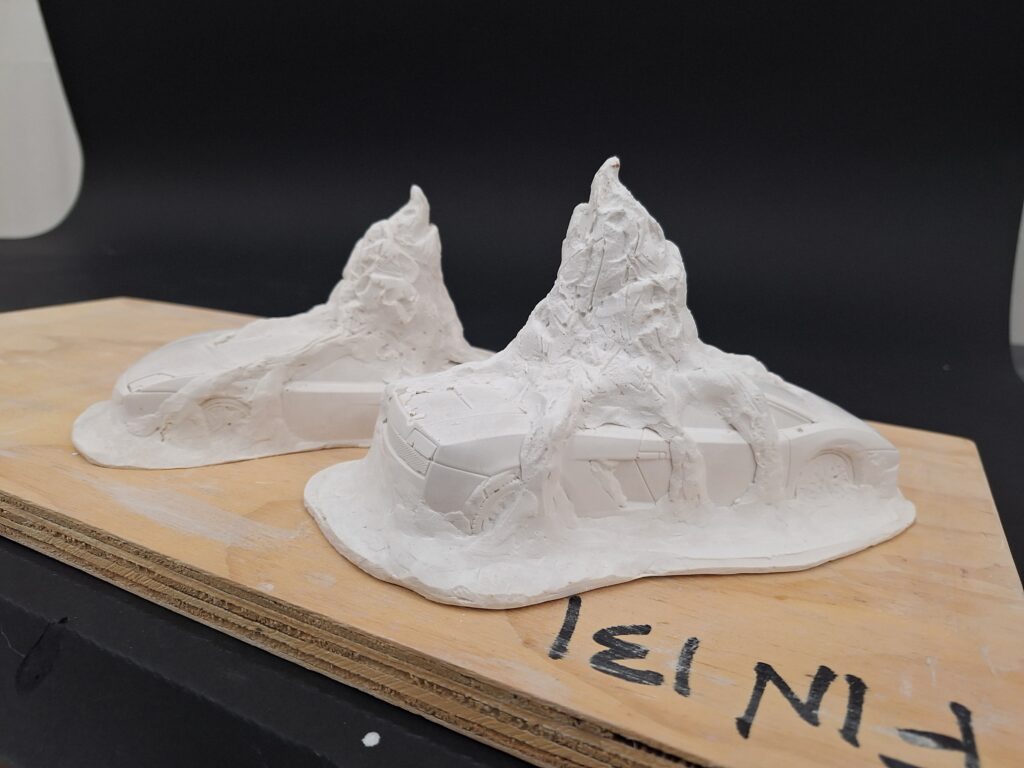
I used a scraping tool to smoothe around the bottom edges. On the full one, some of the hydrocal spilled over, which gave an accentuated puddle effect. I am looking forward to pouring more versions with varying amounts of hydrocal and left to set at different angles. Hopefully the finished display will suggest degradation and loss, in keeping with my commentary on these dasy of climate catastrophe we are living in.
A poem of mine, that I have read at a community event, came to mind when discussing the connection of art and sparking conversation about important matters:
Whatever
.
Whatever we do
let’s do something
let’s not be the ones
who do nothing
though things may
be wrapped in darkness
and sheeps’ clothing
.
Let’s keep looking
let’s keep finding
feeling with our hands
listening for the hidden
revealing the mystery
moving intuitively
and doing whatever something
comes to mind, body, heart
.
Perhaps a movement
maybe a sound
possibly a work of art
refusing to let
darkness win the day
refusing to lay down
and do nothing
.
Let’s put them all together
our offerings of something
and hold them as
a banner and a shield
to overcome
whatever lies ahead
.
By Carys Owen
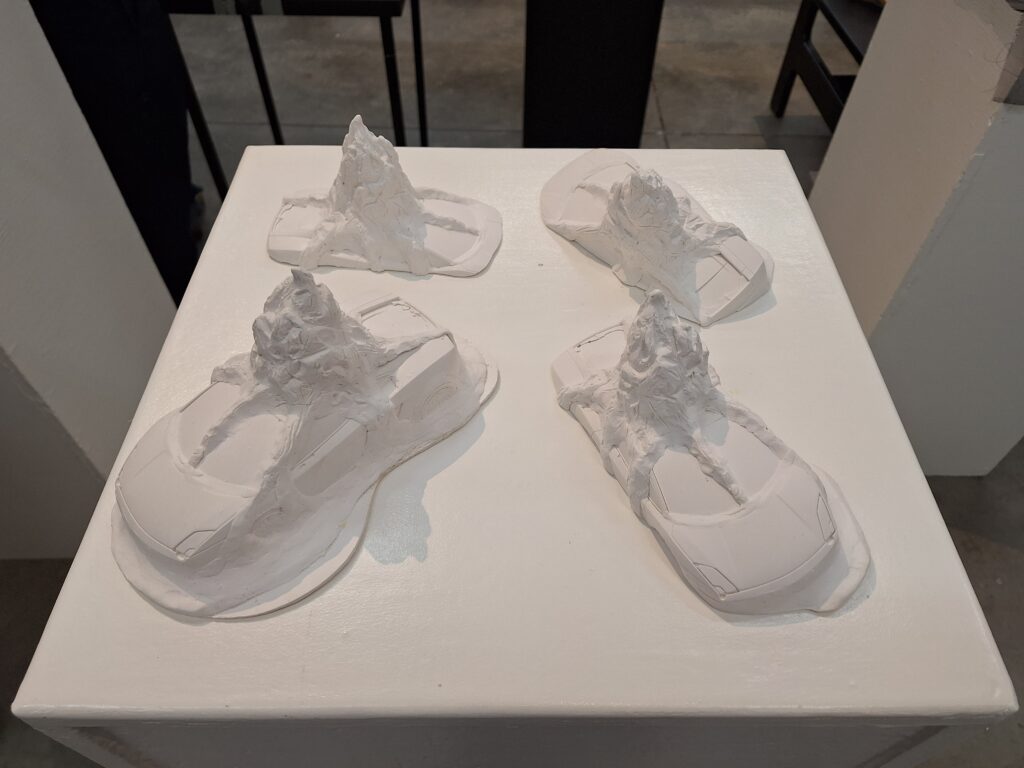
Demoulding can become a feat of strength! The rubber mould was cut part way up to avoid distortion.
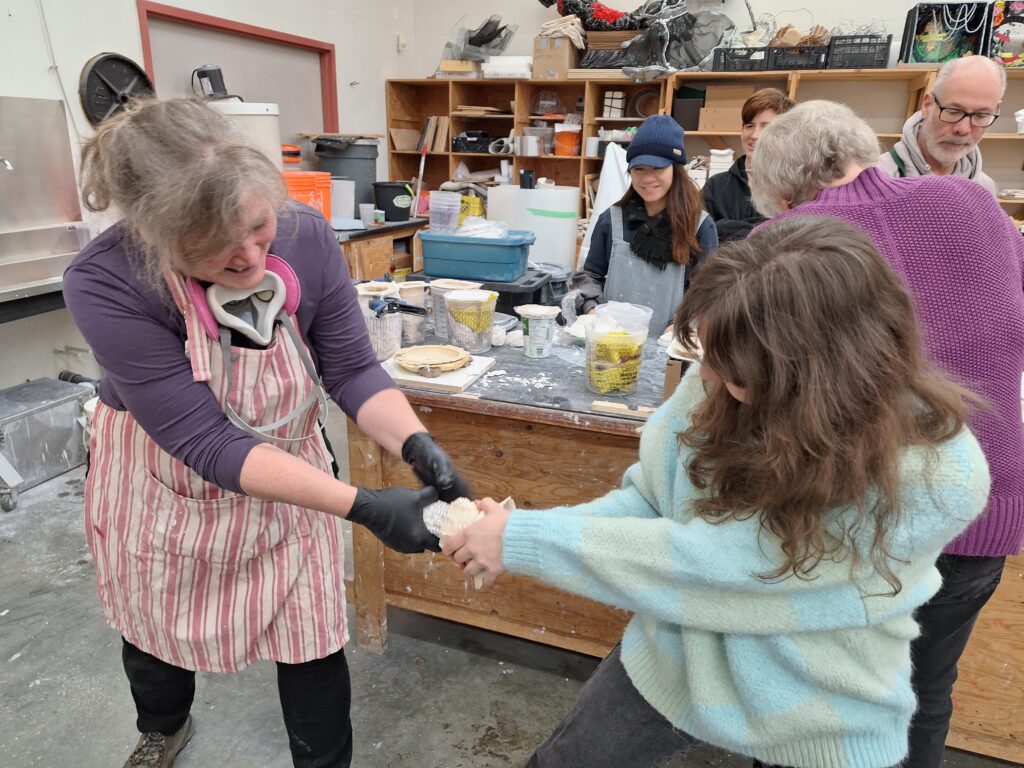
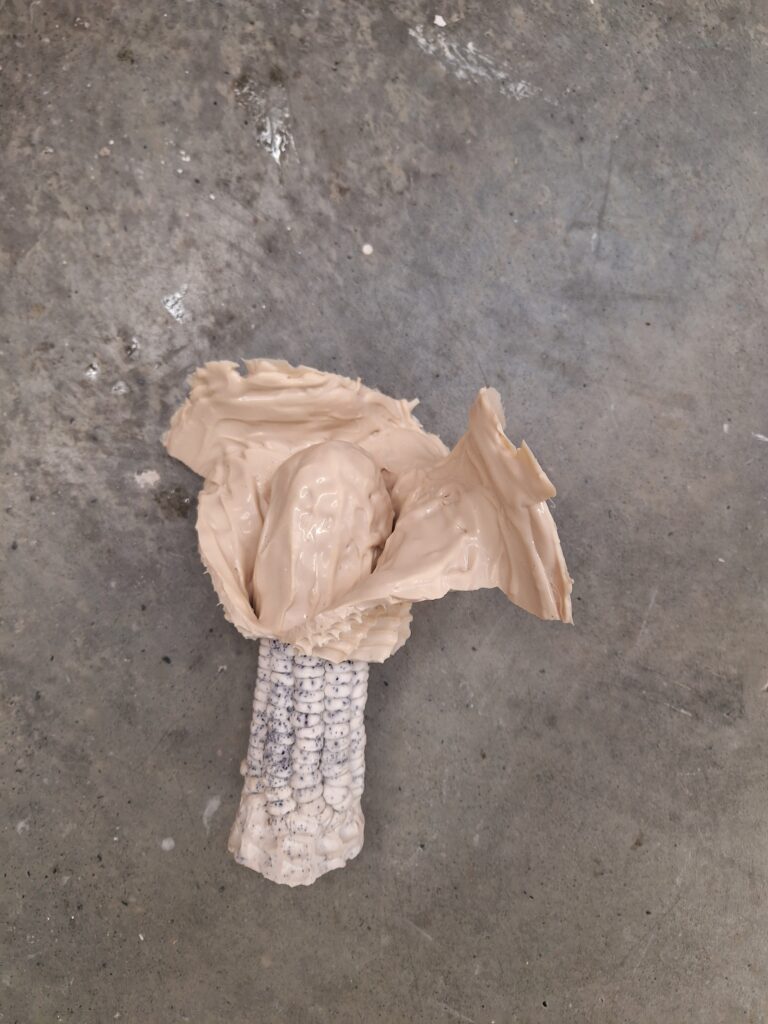
Line up of materials- left to right- ? hydrostone, hydrocal, plaster. The initial pours will be of hydrocal, which is stronger than plaster.
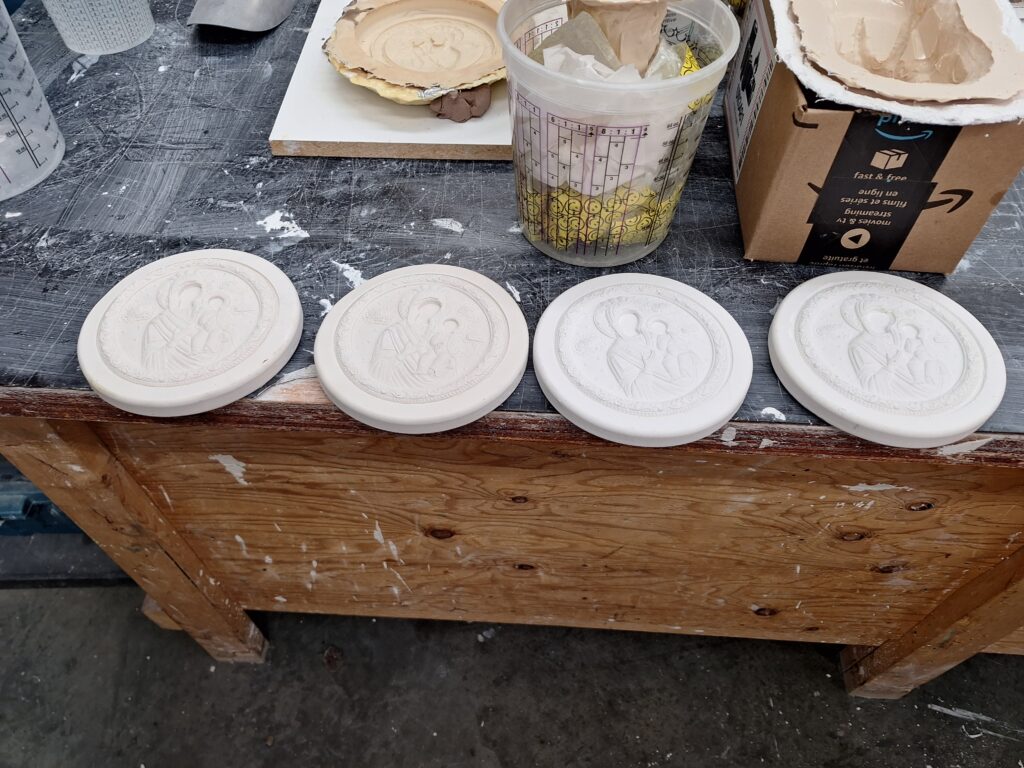
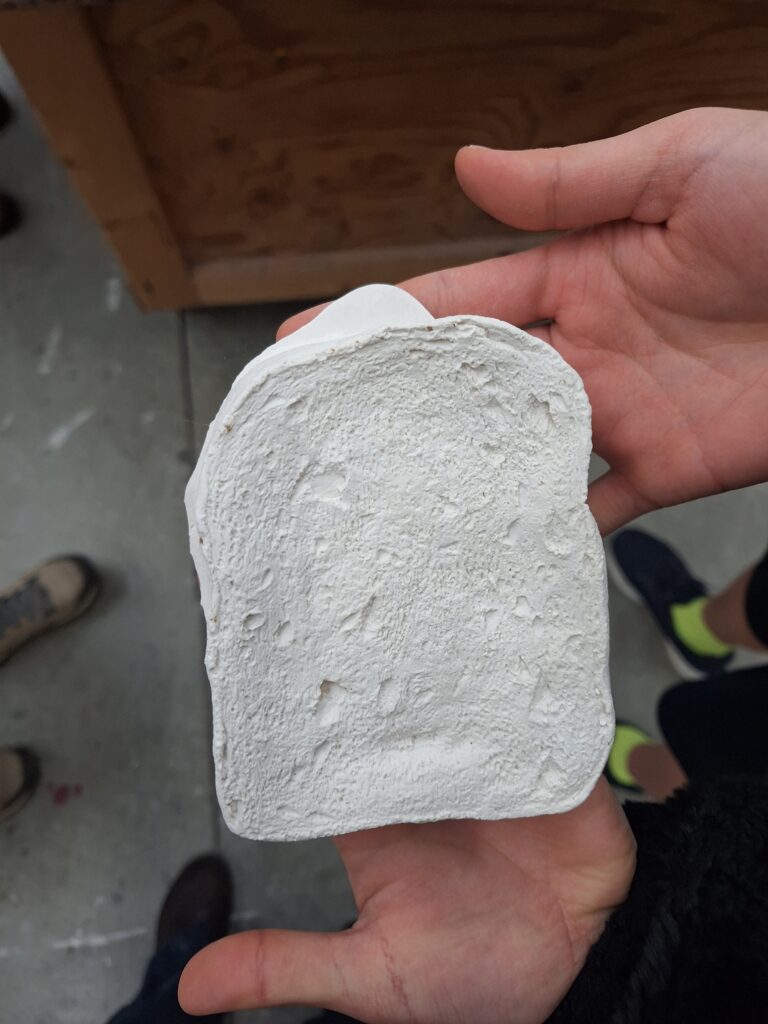
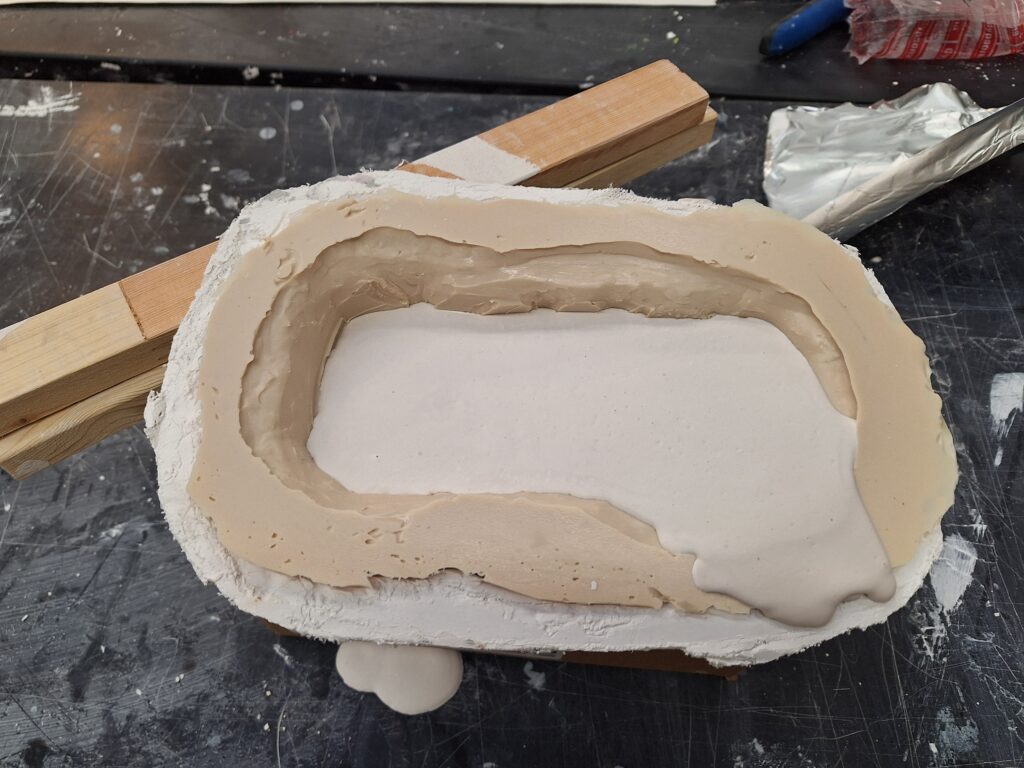
We set up a preliminary display and enjoyed looking at each others’ projects so far. It will be interesting to see how they will appear in the final presentation, e.g. paint or no paint, props or minimalism, modifications or plain and simple….
My project looked very effective in white on the white plinth so I have decided not to paint them. However, I will continue to create more iteration using less and less hydrocal- playing with the negative space off what is left out. This lends itself well to the appearance of melting and decompostion. The process reminded me a bit of printing in that you have to be mindful of what you include and what you leave out to achieve the desired result.
